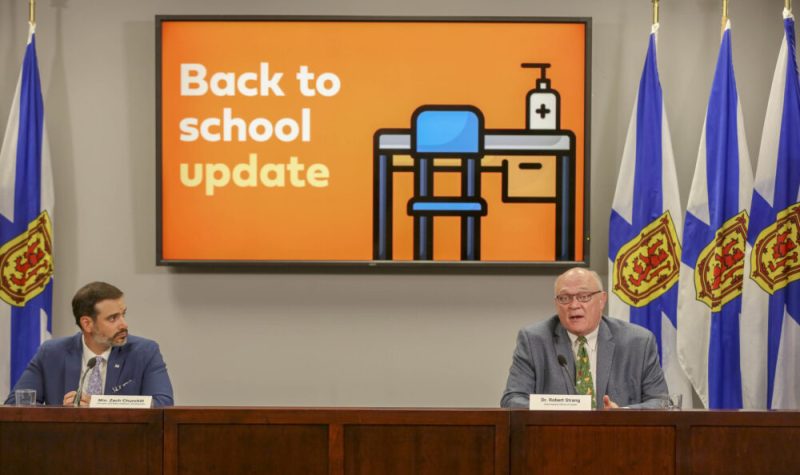A framework is now in place for students heading back to school during the COVID-19 pandemic
Nova Scotia’s public health department has outlined a series of levels and responses ranging from low to high for dealing with COVID-19 exposure in schools.
A high-risk contact is a close contact with a minimum 15 minutes contact up to 48 hours before the case became sick. That would include students and teachers in the same class, riding the same bus, or engaged in the same activity.
Moderate risk will be assessed if the person managed to maintain a 2-metre distance from the affected person.
Low risk would be anyone who had incidental contact such as walking past the affected case in the hallway.
The province’s chief medical officer Dr. Robert Strang says that is what his department is trained for.
“There’s a lot of work for public health to say, where has that person, the case been? What have they been doing? Who else was in those spaces and what were the types of interactions that happened,” said Strang. “But that’s the types of work that we do everyday with all types of communicable diseases.”
Those exposed to the high risk will have to isolate at home for 14 days and anyone who tested positive will have to follow the prescribed protocols.
Strang says a key piece will be communicating any cases within the school community.
Students showing symptoms while in school will be isolated in the building and a parent will be contacted to pick them up.
Strang says anyone testing positive for COVID-19 needs to stay home and that should be part of getting ready to return to school.
“Parents, teachers and students should now be thinking about having a plan in the possibility they may be at home for 14 days,” said Strang.
Schools will only closed if public health feels there is a great risk to the entire school population. He says it is more likely cohorts, such as classes within the school may be sent home.
Strang notes a great deal of focus has been placed on social distancing.
He says it is important but is not the only consideration when trying to stop the spread of COVID-19.
“We have a package, if you will, or a range of preventative measures that work together in a complimentary manner. Starting with keeping kids home from school and getting them assessed if they’re feeling unwell to masking on buses, masking in hallways, increased cleaning, increased hand-sanitization, older kids grades four and up wearing masks in school, keeping separated as much as possible in the classroom,” said Strang. “All those together provide, I believe, the appropriate level of safety for where we’re at with a low-risk of COVID occurring in school.”
The province has published their back-to-school plan online.
Education and early childhood development minister Zach Churchill says he understands parents, teachers and students have concerns about returning to the classroom.
“I think, once people get back to school, get used to the new measures that are in place, get use to the new habits that we all have to develop with COVID hanging over our shoulder; and if we can do that without seeing any major issues and people see that the health protocols and safety protocols are working, I think that will help with the reduction of anxiety," he says.
Churchill says too ensure a successful transition back to the classroom, parents need to talk to their kids to calm those concerns before they return to class Sept. 8.
Reported by Ed Halverson
E-mail: edhalversonnews@gmail.com
Twitter: @edwardhalverson


